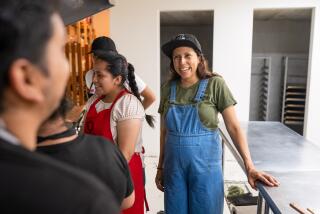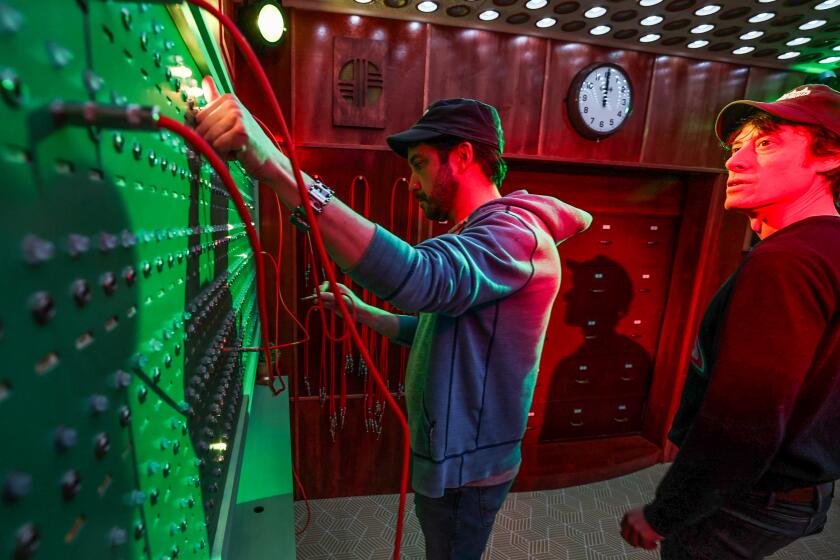Tasty Wellington, a place to be eaten up
From a sidewalk bistro table, the scene looked a lot like San Francisco: Victorian houses, cable cars, chalkboards scribbled with the day’s organic specials, bohemian-looking locals wrapped in woolly scarves. But when the waiter asked me how I’d like my coffee — a “flat white” or a “long black” — I knew I was in New Zealand. And when I tasted the coffee, fresh and fragrant and made with finesse, I could pinpoint Wellington.
New Zealand’s capital city, on the southern tip of the North Island, has become the country’s culinary epicenter. With only 180,000 residents, it routinely beats Auckland (more than 1 million strong) in winning the country’s “restaurant of the year” award, bestowed by New Zealand’s Cuisine magazine. Geographically compact, with the international trade and tastes that a capital attracts, downtown Wellington is stuffed with cafes, cocktail bars, fine-dining establishments, seafood specialists and bistros — one per 600 residents (it’s one per 400 in Manhattan). While the rest of New Zealand looks to Britain for its culinary inspiration, Wellington gazes out to the Mediterranean.
“We’ve got a country with a very Anglo-Saxon food heritage, except for this exciting enclave in Wellington,” said Lauraine Jacobs, a New Zealand cookbook writer and Cuisine food editor. Locals generally agree that Wellington’s foodie reputation began when small groups of immigrants from Italy (fisherman from the Sicilian island of Stromboli in the 1890s) and Greece (after World War I) happened to settle near Wellington, bringing along their mothers’ recipes and espresso machines. In the 1950s, coffee bars (unlike pubs or restaurants) were allowed to stay open until early in the morning, playing jazz, supported by the new population of Jewish refugees — artists, musicians, professionals — who arrived during World War II. Since then, the flavor of Wellington has been set: international, Mediterranean, coffee-obsessed.
Over the last 10 years, as liquor laws and closing times have liberalized, the restaurant culture has caught up with the cafes. Flourishing wine regions an hour away have added to the addiction to dining. Increasing numbers of nearby farmers, fishermen, cheesemakers, olive oil producers and chocolatiers are constantly varying and improving their products. The city has developed such a reputation among foodies that it has become the Down Under destination for travelers with adventuresome palates. With such a wide selection of bistros, cafes, wine bars and seafood restaurants to choose from, I hardly knew where to begin.
Logan Brown, an upscale restaurant in a stylishly down-market neighborhood, is the place most locals recommend for a truly Wellington-style meal. The atmosphere is elegant, but the food is simple, relying on fresh local ingredients. Co-owner Steve Logan told me that dining out and eating well have become part of the civic identity: “Wellingtonians try not to be pretentious, but we know and love delicious food, wine and good company,” he said. “Everywhere you go in Wellington we have artisan quality.” Logan and partner Al Brown underscore their unpretentious style with a television show, “Hunger for the Wild,” which features them driving around New Zealand in a battered old car to hunt, gather, fish and forage with the locals, always focusing on wild ingredients and good company.
Logan Brown, which opened its 1920s-era bank chamber doors in 1996 — and won Cuisine’s 2009 “best restaurant” award — anchors Cuba Street, a former red-light district now home to some of the city’s chicest bars and eateries. The street, lined with sidewalk tables, is closed to all but pedestrians, shoppers and skateboarders for several blocks; tattoo shops and Tibetan import boutiques crowd the coffeehouses, bistros and swanky cocktail lounges. Tucked in one alley is Duke Carvell’s, where I grazed on Mediterranean tapas under the gaze of the owner’s gilt-framed ancestors. In another, Matterhorn serves up several pages of simple to inspired cocktails for its sophisticated but casual clientele.
Several blocks away, and nearly as bustling as Cuba Street, is Courtenay Place, which offers everything one could desire in high-ceilinged, intimate bistros serving local, seasonal food, especially at the restaurants Capitol and the Ambeli (the latter meaning “vineyard” in Greek, a nod to some of the town’s early residents). The neighborhood is at the epicenter of Wellington’s arts and film scene, and the site of the New Zealand International Arts Festival (Wellington-made films “The Lord of the Rings” and “Return of the King” had their world premieres at the Embassy Theatre at Courtenay Place).
Down at Wellington harbor, a few blocks away, lunch at Martin Bosley’s Upstairs at the Royal Port Nicholson Yacht Club is hardly as stuffy as it sounds, but Bosley has exacting standards; the seafood is so simple, sweet and firm you know it’s from some of the cleanest water on Earth. I loved eating fresh oysters and sipping a local Sauvignon Blanc, watching the boats on the shimmering harbor.
Bosley recently cooked up a new City Market on the waterfront, modeled after the Ferry Building farmers market in San Francisco, where visitors can go from stand to stand, tasting single-estate apple slices, eating just-shucked oysters, dunking bread in artisan olive oils and watching chef demonstrations. Since its debut last year, the City Market has been the place to be, straw basket in hand, on Sundays — which doesn’t surprise Bosley. “If you live in Wellington,” Bosley said, “it pretty much goes without saying that you’re passionate about food.” And if you visit Wellington, you’re sure to leave passionate about its food scene, and ready to return for another taste.
More to Read
Sign up for The Wild
We’ll help you find the best places to hike, bike and run, as well as the perfect silent spots for meditation and yoga.
You may occasionally receive promotional content from the Los Angeles Times.






